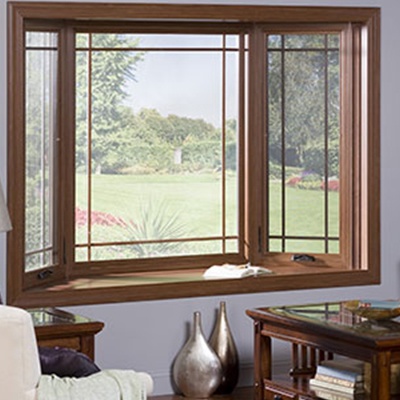Condensation is a sure sign that your windows need to be changed.
Windows are an important barrier in between the rough, variable weather conditions outside and our calm, consistent residence temperature levels. Home replacement windows tend to have a fifteen to twenty-year lifespan, so luckily we do not need to think about replacing them frequently. However knowing when it's time to replace them can be tricky. You might be tempted to try and hold out for another season if you recognize the warning signs. But changing your windows currently could help you expand the life of your whole home and also maintain you as well as your family cozy all wintertime long. Here are a couple of indications that your home windows are not all set for the extreme winter season this year.
Drafty Residence
As windows age, they begin shrinking, breaking, and also not shutting properly, enabling air from within your home to drain. As a result of this, your HEATING AND COOLING system battles to keep your home at a consistent temperature level and sends your power expenses increasing. If your home is visibly more drafty or your electrical costs appear to be going up this fall for no obvious factor, you might wish to have your home windows checked out.
Difficult to Lock
We enjoy having our windows open when the weather behaves, however they shouldn't be open all of the moment. Throughout the winter months when we're not home, your home windows ought to be shut in place and also secured. Windows with malfunctioning locks is a major security risk that should be corrected as soon as possible to maintain your household safe. Usually the lock can be fixed inexpensively, yet if the window is having difficulty remaining open or shut or is leaking air, it might be best to just install a brand-new one.
Condensation Forming
The biggest indicator that you require new home windows is when condensation starts to form on the inside of your window when it is closed and also secured. This is a sign of a most likely irreparable problem and also ought to be addressed as soon as possible to avoid the possible growth of mold and mildew in the frame, which can spread to other areas of your home as well as cause severe damages when left without treatment.
Have you nearly had it with your old, breezy home windows?
Is this the year you've determined to ultimately change your home windows? Replacing your windows with new ones features great deals of benefits, including a power performance boost, much better ventilation, and also far better high quality of light in your home. The National Fenestration Rating Council licenses as well as labels home windows (in addition to doors and skylights) on their efficiency and power effectiveness. When you're shopping for brand-new home windows you'll see these scores on the NFRC tag. In this week's blog, we'll speak about the best ways to read this tag to make certain you're making an informed choice on your brand-new home windows.
Warm Gain as well as Loss
The initial three properties on the label relate to exactly how the home window performs with regard to heat gain as well as loss. Windows gain and also lose heat in 3 means:
Direct transmission via the glass.
Radiation of warmth from the sunlight right into the house, and outdoors from items in your home.
Air leak with as well as around the home window.
U-factor
This is "The rate at which a window, door, or skylight carries out non-solar warm flow." The takeaway here is "The lower the U-factor, the extra energy-efficient the home window, door, or skylight."

Solar Warmth Gain Coefficient
The SHGC tells us what does it cost? radiation is admitted via the window and also released as warm in the residence. The lower the number, the much less warmth is read more transferred. However, this doesn't always mean you want a low SHGC. For instance, due to the fact that a greater SGHC implies the home window permits much more warm in, you can permit extra solar heat inside in the wintertime, which can lower your home heating requirements. In this case, the climate you live in will play a major consider choosing an SHGC rating.
Air Leak
This measures what does it cost? air the home window lets in relative to a particular pressure distinction throughout it. The lower the rating, the less air leak.
Sunshine Passage
The next two scores determine how much light a window allows into your residence.
Visible Passage (VT).
This number in between 0 as well as 1 measures what fraction of the spectrum of noticeable light the window lets through. The greater the fraction, the a lot more light the window will certainly allow. If you intend to utilize daylighting in your house, you'll want a greater fraction. If you intend to lower interior glow, you could want a lower portion.
Light-to-Solar Gain.
This number is the ratio in between the SHGC and also the VT. "The higher the number, the a lot more light transferred without including excessive amounts of warmth.".